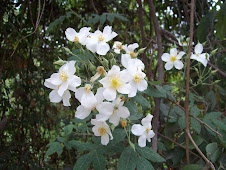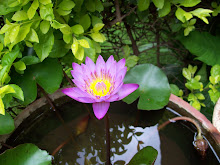 Ber or Zezyphus sativa ia a native of the Indian subcontinent. It is found in the tropical south as well as in the arid regions of Rajasthan. In December and January, the trees become laden with ripe fruit, inviting birds and small mammals. The dried fruit is preserved and eaten to alleviate sun stroke and thirst.
Ber or Zezyphus sativa ia a native of the Indian subcontinent. It is found in the tropical south as well as in the arid regions of Rajasthan. In December and January, the trees become laden with ripe fruit, inviting birds and small mammals. The dried fruit is preserved and eaten to alleviate sun stroke and thirst. The name Ber comes from the Sanskrit Badari. Ber trees were believed to have been growing in the region of Badrinath, high up in the Himalayas. For the Hindus, this thorny tree is lovable.
The name Ber comes from the Sanskrit Badari. Ber trees were believed to have been growing in the region of Badrinath, high up in the Himalayas. For the Hindus, this thorny tree is lovable. Thetree has many uses- farmers use the thorny branches to keep out atray cattle from their fields. The wood is hard, and is used to make agricultural implements.
Now we see ber fruit the size of small apples- the result of hibridization.
A very tasty sweet and sour pickle is made from the fruit.



